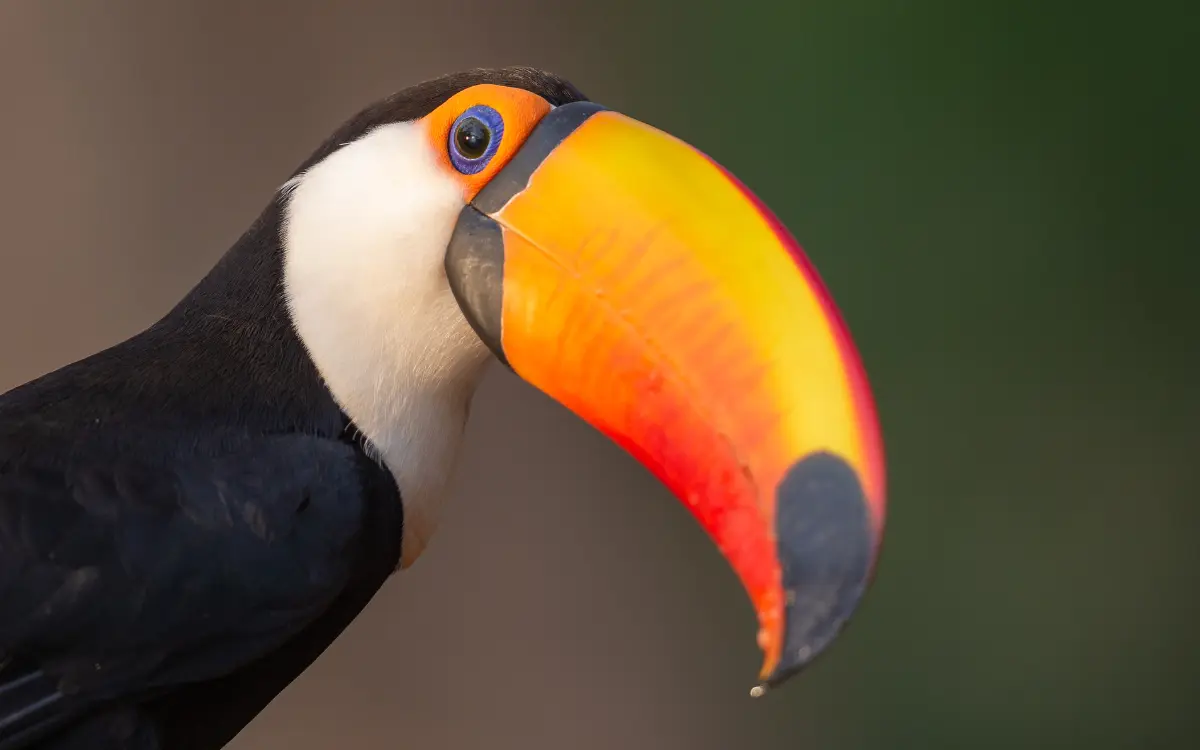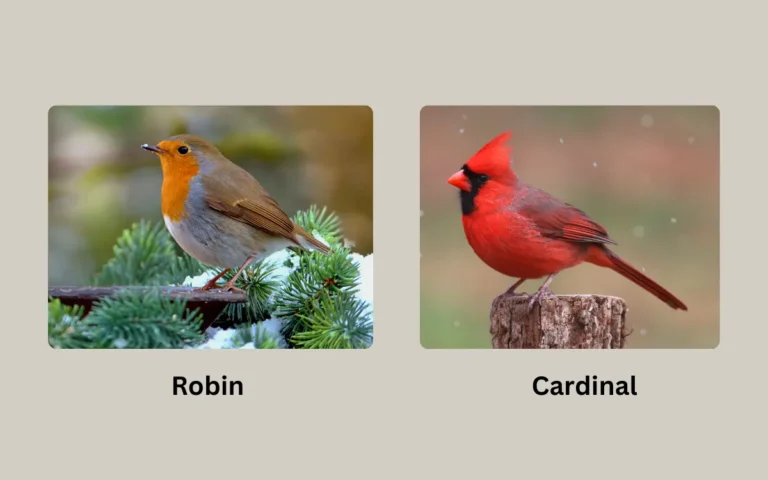8 Toco Toucan Facts: A Colorful Bird of South

Toco toucans are famous for their big, colorful beaks. They live in South America and have interesting eating habits and ways of living. Learn cool facts about them.
At a Glance 8 Toco Toucan facts:
- Toucans are known for their oversized, vibrant beaks.
- They are native to the rainforests of Central and South America.
- Their diet mainly includes fruits, but they also eat insects and small animals.
- Toucans often nest in tree holes, sometimes in those made by woodpeckers.
- They play a vital role in seed dispersal, aiding forest regeneration.
- Toucans have a long, narrow tongue, which can be up to 6 inches.
- Their beak is surprisingly lightweight, being made of keratin with air pockets.
- They are social birds, often seen in small groups or pairs.
| Fact Category | Toco Toucan Fact |
| Relation | The Toco Toucan is related to other members of the toucan family. |
| Habitat | Lives in South America, in habitats like rainforests, woodlands, savannas, and man-made habitats. |
| Size | About 25 inches long with a beak of up to 7.5 inches. Weighs around 600 grams (1.3 pounds). |
| Appearance | Mostly black with a white throat, red tail, and a large, colorful beak made of keratin. |
| Social Structure | Typically seen in pairs or small groups. Communicates with loud croaking sounds. |
| Diet | Omnivorous, primarily eating fruits, but also insects, reptiles, and bird eggs. Beak aids in feeding. |
| Reproduction | Nests in tree holes. Both parents care for the eggs, which hatch in 16-20 days. Chicks’ beaks grow post-hatching. |
| Role in Ecosystem | Plays a crucial role in seed dispersal, impacting other species like hyacinth macaws. |
| Conservation Status | Listed as ‘Least Concern’ by IUCN, but faces threats from habitat destruction and the pet trade. |
Physical Description and Subspecies of the Toco Toucan:

The Unique Look of the Toco Toucan
The Toco Toucan is famous for its big, colorful beak. It’s the largest in the toucan family, living in South America.
This bird is mostly black with a white throat and a red tail. Its beak, a mix of orange, black, and sometimes other colors, is not heavy despite its size. It’s made of a light material called keratin.
Size Matters
Toco Toucans are about 25 inches long. Their beak is impressive, making up almost one-third of their length. They weigh around 600 grams, which is like carrying a little over a pound of sugar!
A Tale of Two Subspecies
The Toco Toucan has two recognized subspecies, each with slight differences. The first is the R. t. toco, found in regions like the Guianas and Brazil.
The second is the R. t. albogularis, seen in areas like Paraguay and northern Argentina.
These subspecies differ a bit in size and coloration, with the R. t. albogularis being slightly smaller and having a whiter throat than its cousin.
Similar Article –9 Mockingbird Facts Most special
Habitat and Distribution of the Toco Toucan:
The Toco Toucan lives in many parts of South America. It likes places with trees, like rainforests, woodlands, and savannas. But what’s cool about these birds is they can also live near people, in gardens and parks.
They are found in countries like Brazil, Paraguay, and Argentina. Their ability to live in different places, even where humans are, shows how well they can adapt.
The Toco Toucan is a great example of how animals can adjust to both natural and changed environments. This makes them really special birds to learn about!
Diet and Feeding Habits:
The Toco Toucan eats many things, making its diet omnivorous. Its favorite food is fruit like berries.
But it also eats insects, small reptiles, and sometimes bird eggs. The Toco Toucan’s big beak helps a lot with its eating habits. It uses the beak to reach fruits on trees and to peel them.
This beak is also handy for catching insects and other small animals. So, the Toco Toucan’s beak is not just for looks; it’s a useful tool for feeding! This shows how a bird’s body can be perfectly designed for the way it lives.
Behavior and Social Structure:
Toco Toucans are social birds. They usually hang out in pairs or small groups. When it comes to talking to each other, they make loud croaking sounds.
This helps them communicate in their natural habitat. When they fly, Toco Toucans have a unique style. They flap their wings hard and then glide through the air. But they can’t fly very far or very high.
This is because their wings are short compared to their bodies. So, while they are good at hopping around in trees, they’re not the best at long-distance flying.
Reproduction and Life Cycle:
The reproduction and life cycle of Toco Toucans are quite interesting. They make their nests in holes in trees, often using spots left by other birds like woodpeckers.
Both the mom and dad toucan take care of the eggs, which hatch after about 16 to 20 days.
When the baby toucans, called chicks, are born, they don’t have a big beak right away. The beak grows as they get older.
Both parents feed and look after the chicks until they are ready to leave the nest. This family teamwork helps ensure the chicks grow up healthy and strong.
Role in the Ecosystem:
The Toco Toucan plays a special part in the ecosystem. One of its main roles is in seed dispersal. When toucans eat fruits, they help spread the seeds around.
This helps new plants grow in different places. This is not just good for the plants; it’s also important for other animals.
For example, the hyacinth macaws rely on certain trees for nesting, and these trees depend on toucans to spread their seeds. So, by eating fruit and moving seeds, the Toco Toucan helps other species survive too .
Threats and Conservation Status:
The Toco Toucan, like the dodo bird fact, faces threats but is not endangered. Its status is ‘Least Concern’. Main threats are habitat destruction and the pet trade.
Cutting down forests means less home and food for them. Being caught for pets hurts their wild numbers. Protecting forests helps these birds. Conservation efforts are key to keeping them safe and maintaining their population.
Know more about – Toco Toucan
FAQs :
Q:What is the toco toucan known for?
Ans: The Toco Toucan is known for its oversized, vividly colored beak and being the largest in the toucan family.
Q: How many Toco toucans are left in the world?
Ans:The exact number is unknown, but they are not currently considered endangered and are listed as ‘Least Concern’ by the IUCN.
Q: What is the Speciality of toucan?
Ans: A toucan’s speciality is its large beak, which is useful for feeding and thermoregulation, and its role in seed dispersal which benefits the ecosystem.
Q: Is toucan a rare bird?
Ans: Toucans are not considered rare overall, but some species might face threats affecting their population.
Q: How long can toucan live?
Ans:In the wild, toucans can live up to about 20 years.
Conclusion :
The Toco Toucan is a vibrant bird from South America, famous for its large, colorful beak. It plays a key role in its ecosystem, especially in seed dispersal. While not endangered, it faces threats from habitat loss and the pet trade.






